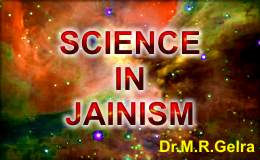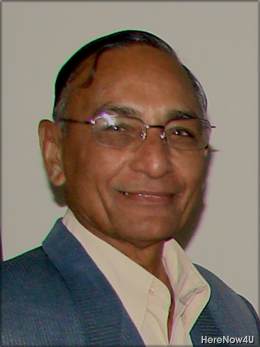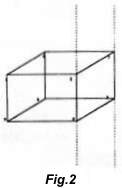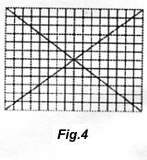
(II) EIGHT-POINT CENTRE (EPC)
- The EPC may be compared to the figure that emerges when the four udders of a cow are in one plane and four udders of another cow are in a lower plane, interlinking in such a way that each point gets enjoined to other two points. This is probably three-dimensional figure that of a cube (fig. 2,3). EPC exists at the half way of vertical dimension of the universe.
- It is emphasized that from the corner points of eight-point centre (EPC) figure, four main directions (East, West, North and South), four intermediate directions and two zenith (upper) and nadir (lower) directions originate. (Fig. 4, 5)
- E. Schubring the German Indologist highly appreciated the Jain mathematicians’ remarkable mode of developing an eight-point centre, which forms geometrically a figure of three-dimensional cube.
This cubical unit is quite significant since all directions originate from the central cubical unit by elongation of point-paesa (region) gradually. The origination of these directions is independently of the sun.
We may observe that the Jains have illustrated the shape of the universe with the help of three bowls including the shape of the eight-point centre, which is compared to the udders of the cow. It reveals a notable degree of correct observation in the field of geometry and wonderful insights into the natural world. Jain mathematicians contributed tremendously to the growth of geometry in the early stage of the Vedic period.
Cosmology is a modern and advanced subject and during this century various models of cosmology have been formulated by scientists (static, steady-state, evolutionary) under various assumptions. Scientists could find the mass density and the total-mass content, the age, the phase of its present dynamical behaviour and its chemical evolution with time, for formulating a comprehensive theory on cosmology. It is, however, important to note that the modern cosmologists have not proposed any centre or centres of universe.
The subject of modern cosmology has been a meeting place of contradictory (or at least alternative) theories and observations. The present observational status does not let any cosmological model to be either, wholly accepted or totally rejected. Hence none of the models can be singled out as an ideal one. Even the most powerful optical and radio telescopes available at present are unable to fathom the whole depth of the universe and whatever observations are obtained at large distances, their correct interpretations have quite often eluded the scientists.
It has thrilled the traditional cosmologists particularly Jain cosmologists on account of identical and closer interpretations which appear to be quite rational and scientific. We consider cosmology as a truly modern subject but at the same time it has ancient roots. It would therefore, be a worthwhile exercise to investigate the issues in Jain cosmology which are either in tune with or may provide suggestive leads to the modern cosmology.
Hence, our studies are not to discuss the physical or the metaphysical part of the cosmos but to observe the growth of geometry with a special reference to the significance of the eight-point-centre of the universe. This issue becomes all the more important because modern cosmologists have virtually ignored the centre or the centres of the universe.
Some of the basic facts about the Universe and its centre may be discussed in the light of the following essential parameters, viz:
- Mass
- Space
- Time
- Geometry
 Dr. Mahavir Raj Gelra
Dr. Mahavir Raj Gelra





